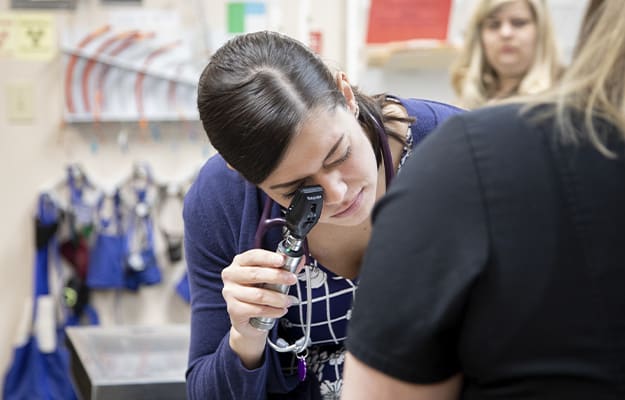At Friendly Animal Clinic in the Greensboro and Guilford College area, our veterinarians offer diagnosis and surgical treatment of eye and eyelid (ocular) disorders for cats and dogs.
What are ocular procedures for pets?
Ocular procedures are those relating to the eye and eyelid.
At Friendly Animal Clinic, our vets diagnose and treat many ocular conditions for cats and dogs, including eyelid tumor removal, cherry eye surgery, entropion surgery, ectropion surgery, and exenteration of the orbit.
Our Greensboro facility is fully equipped to administer ophthalmic examinations and diagnostics.
For difficult cases, you may be referred to Carolina Veterinary Specialists to a board certified ophthalmologist.

-
I have been going here for years. The doctors and staff are awesome. Tank my boxer loves the people. If you want good care and great compassion for your pet this is the place to go. The receptionists greet you with open arms and are there to assist you and your pet on the spot. Love love love them all. I wouldn't take my animal anywhere else.
Symptoms of Eye Problems
- Pain
- Redness
- Increased Tear Production
- Visible Third Eyelid
- Corneal Cloudiness
- Dilated Pupils
- Obviously Enlarged Eye
Common Eye Problems in Pets
- Cataracts
- Glaucoma
- Vision Loss
- Retinal Disease
- Infections
- Abrasions and Scratches
- Drainage
- Dry Eye
- Corneal Ulcers
- Tumors
- Auto-Immune Conditions
- Eyelid Issues
Ophthalmology FAQs
- What are the most common eye problems for older cats and dogs?
Cataracts
Cataracts can sometimes develop in the lens of the eye, which appears as a cloudiness. This can decrease vision and even lead to blindness as it is blocking light from being able to reach the back of the eye. Cataracts often develop slowly over time and can affect both eyes or only one.
Glaucoma
The production and drainage of fluids in the eye is delicately balanced to maintain constant, consistent pressure. Glaucoma is the disruption of this balance, increasing pressure on the eye.
Glaucoma symptoms include pain, redness, corneal cloudiness, increased tear production, a visible third eye, and dilated pupils. Eyes can become enlarged in advanced cases.
- If my cat or dog has something in their eye, what should I do?
You can begin by attempting to remove the object or material by flushing your pet's eye with a saline solution. However, if your pet is experiencing pain, this may be very difficult to do.
Never try to remove the object with your fingers, and especially not with tweezers, as both methods could cause serious damage to their eye.
If you're unable to flush the object out on your own, you should bring your pet to your veterinarian as quickly as possible to try to avoid any complications or unnecessary pain. - Should my pet have cataract surgery?
Not all cataracts require surgery. In many cases, the cats and dogs with cataracts are not impacted seriously by the opacity on their eye, allowing their vision to remain quite good still. A veterinary ophthalmologist is the only one that can accurately determine if a particular patient requires cataract surgery, and this is generally only in cases where the cataract is severely affecting the animal's vision.
If your pet has a serious cataract and surgery has been recommended, it will greatly impact their quality of life. Cataract surgery is not life-saving, but it does help to restore their vision. For a blind pet to be able to see their owner again, to play with toys, and see out the window, it can be life-changing for the patient and their owner. This is even more true in cases of elderly pets, those with hearing issues, or those suffering from dementia or cognitive problems.
- What is cherry eye?
Dogs have two visible eyelids and a third one that is hidden in the inner corner of their eye. The third eyelid contains a gland that produces tears. This gland is not typically visible, however, in dogs with a congenital weakness of the ligaments that hold it in place, it can move out of place and become visible. It appears that there is a 'cherry' at the inner corner of the eye.
To correct cherry eye, the gland will be attached to its proper location during a simple surgery.
- My dog has eyelids that roll inwards (Entropin). What can be done?
For dogs whose eyelids roll inwards, they suffer pain every time they blink as the hair will rub on the surface of the eye. This also increases tear production. Left untreated, the condition will eventually cause damage to the cornea.
Occasionally, Entropion will develop as a result of another condition and will resolve once the initial problem is gone. In these cases, your veterinarian can temporarily suture your pet's eyelids so they remain in a more natural position. Surgery may be required in cases with permanent eyelid abnormalities.
